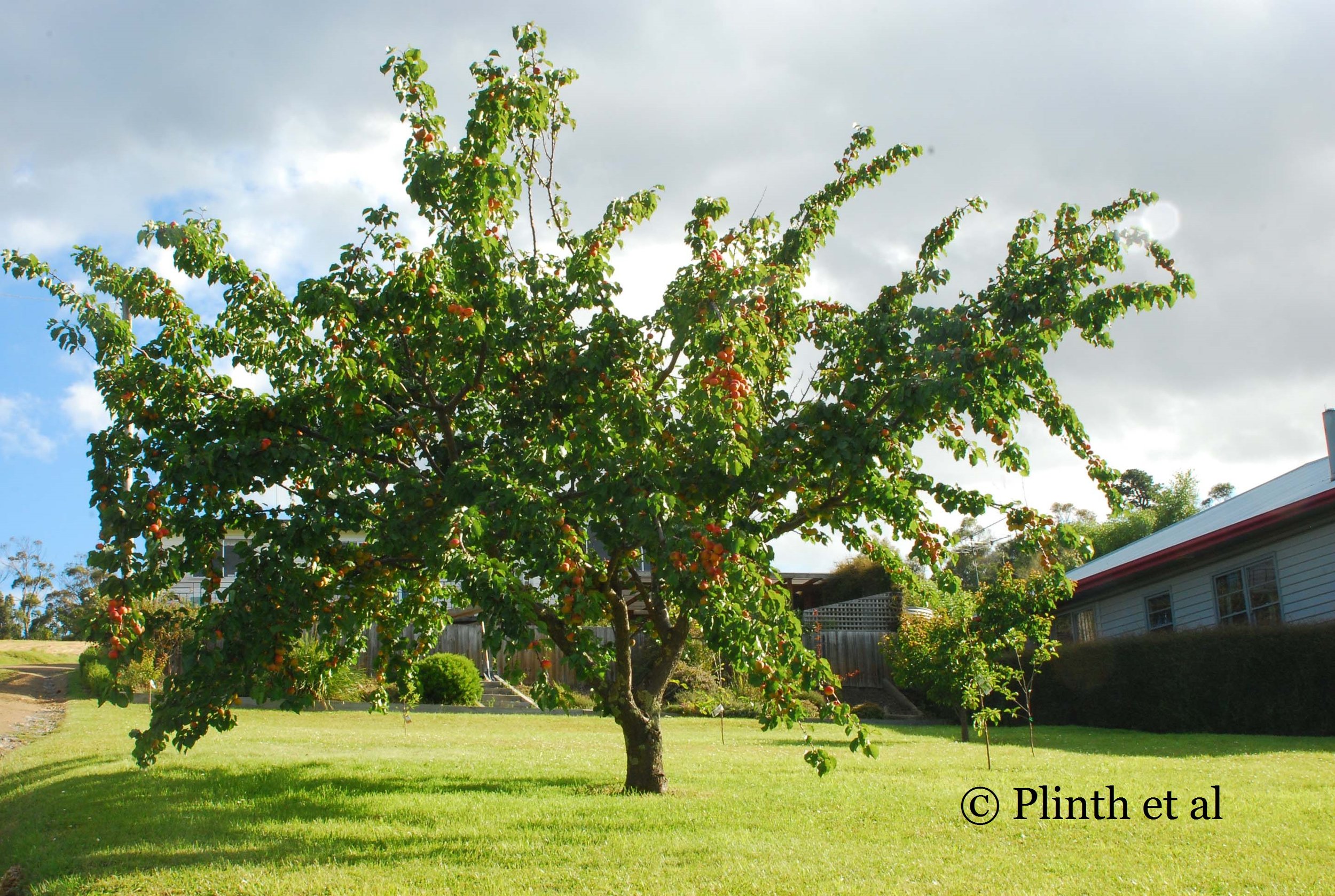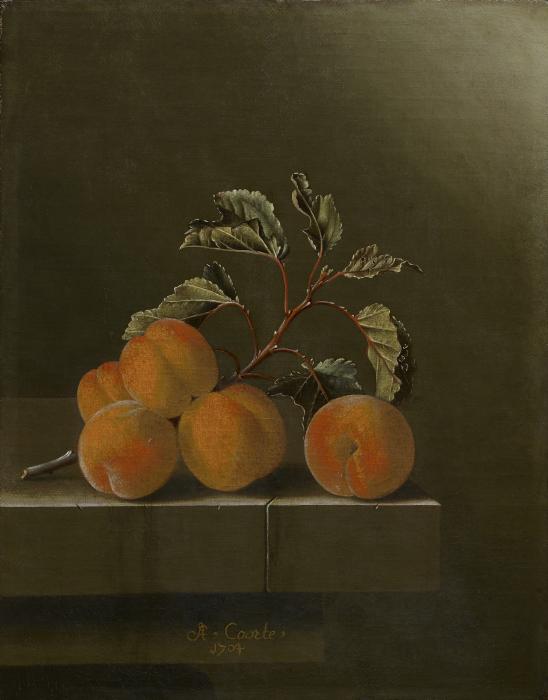Summery Sunshine from a Fruit Tree: Apricots
Having eaten my fill from PYO farms and farmers’ market, I am a self-confessed peach and nectarine evangelist. One summer, I thought nothing ludicrous about driving 35 to 40 minutes to a local farm for peaches and nectarines. One can find me now in the farmers' market holding each fruit close to the nose for scent and prodding it with a finger to test for ripeness. I always select a few ready for immediate eating and others, firmer in shape, for baking or future ripening. Use too soft fruit and one risks having a fibrous, but nonetheless delicious and sweet mess in the baked goods. Summer too brings fresh apricots, which are a welcome change from dried apricots all year long.
Now apricots are accorded the same heroic worship after living in Tasmania. Californian apricots sold in East Coast US supermarkets were rarely flavorsome or even palpable with texture cotton wool-like and sparingly dry. Recently I have found salvation in organic apricots from Washington State sold in Whole Foods, and to limited degree, those from the Red Jacket Orchards in upstate New York. The trouble with apricots in the East Coast is how prone they are to pests and diseases (one Pennsylvanian grower bemoaned how susceptible the trees were to disease, especially brown rot). If the pests and diseases don't befall the trees, then spring frosts can easily wipe one year's crop. Apricots do best in Mediterranean climates where the dry heat ripens the fruit fully and wards off the diseases, and with its warm dry days and cool nights, Tasmania has the ideal climate.
In early January, the first of Tasmanian apricots coincides with the dark cherries, providing ample inspiration and motivation to search or concoct interesting recipes for these stone fruits. Although the season is prolonged by growing different cultivars, it is still gloriously short, requiring one to preserve the glut in various forms. Many a Tasmanian country pantry is not without apricot jam or apricot preserves. Even the wharf upon which the old jam factory sits is made up of countless apricot stones. Fruit jams are often too sweet for my taste, but apricot jam has that exquisite balance of tanginess and sweetness. “Eating apricot jam is having sunshine in a jar,” I enthused to a friend after slathering the jam on my morning toast. A buttery croissant torn and dipped in apricot jam may land you in trouble with the healthy-eating brigade, but the flaky pastry interlaced with flecks of apricot jam is a gastronomic delight of sunny proportions. And the preserves beg for cream – ice cream, custard, and whipped cream.
“The flesh is commonly less juicy than that of the peach, and as a rule, perhaps of higher quality,” Wickson writes in L.H. Bailey’s The Standard Cyclopedia of Horticulture.” What the apricot lacks in juice, it compensates in flavour. Hold a perfect apricot close to the nose, and a honeyed fragrance hints at the ambrosial delights awaiting the taste buds. The fibrous orange flesh is soft, yielding nectar without resistance when eaten. I can think nothing comparable apart from a peach or nectarine plucked from a tree. It is no mystery why Shakespeare, like his fellow Europeans, alludes to them as aphrodisiacs in A Midsummer’s Night Dream. A perfect apricot is surprisingly hard to come by unless you are a fortunate beneficiary of a bountiful tree or a neighbour’s excess harvest. The ones in supermarkets have deceptive appearances – all golden smudged with rouge on their cheeks, only to taste like wet cardboard inside. Cooking tames them into submission as heat transforms the unyielding flesh into something more palatable and delectable. The hard ones can be halved and baked with lemon juice and sugar, eating them later with pistachios and yoghurt. Poaching them in sugar syrup does the trick as well. Sometimes I puree and blend the cooked fruits with custard to make apricot ice cream. In all, apricots enhance the reputation of stone fruits having versatile uses, and having access to Tasmanian ones has excited me.
Few Tasmanian orchards are without one or two apricot trees. Sometimes I pause to admire them – a large one used to grow at my rental place, and I take a detour on the way home to visit a tree in another garden. A mature, healthy apricot tree is a handsome tree in blossom, leaf, and fruit. It does not have the awkward gait of an ancient apple tree or the gangly stature of a pear tree. Instead, the tree spreads out its crown evenly and uniformly round. The dark bark is reminiscent of peach, scaly and furrowed, but smooth where the tissue have not ossified. Flush with orange in youth, the broad, dark green leaves fill out in circles, tapering towards their tips. They have no resemblance to the anaemic, sickle-shaped leaves of the peach or nectarine. Unripe, the fruit are smooth and jade-hued like the celadon vases that once graced the dwellings of Chinese and Korean nobility. They demurely hide behind the leaves, biding their time until sunshine teases out the crimson and golden shades, which rival those of a subtropical mango. Like jewels, the ripe fruit gleam against the lustrous leaves, making a tree look decorated for the festive season. Even the stones are spare in their simple flatness and grey-brown smoothness, not intricate and deeply incised like those in some stone fruits. In its last adieu to the growing season, the tree turns golden to yellow orange in autumn.
By no means am I alone in my reverence for apricots, which have been valued since antiquity. Their emergence in the Western World occurred with expansion of the Silk Route. Apricots became as pervasive as the silk and spices that dominated the trade, and began appearing in various cuisines under different guises. Even the etymological history is long as the apricot’s domesticated journey from Asia and Middle East – in Latin, the fruit was known as praecoqua or praecocia for its early ripening before transmuting to barquqor birquq in Arabic, and transfiguring in various Romance languages asalbarcoque (Spanish);albricocco (Italian); and abricot (French), hence the English derivation as apricot or apricock.
Apricot cultivation elsewhere in mainland Australia, Europe, and the United States is fraught with a long litany of pests and diseases, but in isolated Tasmania, it seems a clincher as long as certain requirements are followed. While appreciative of moisture, apricots dislike wet feet. In my friend’s orchard, the large tree has the benefit of the intermittent drips of water from nearby hosepipe faucet while sending its roots into the loamy soil. It is never inundated with water and the sunny location evaporates any excess moisture. Established trees can be drought tolerant. Because apricots flower on last year’s or older wood, pruning should be done carefully to thin out excessive branches and reduce the likelihood of alternate fruit-bearing years. Large trees with rampant growth can be contained by brutal pruning. The cruel irony of growing apricots is that the trees withstand cold winters well, but fruits none or poorly if spring frosts kill the flowers. For this reason, fresh apricots are hard to come by in East Coast U.S. and any available in supermarkets are from California or Washington State. As beautiful as the tree is, a fruitless tree defeats the main purpose of setting aside valuable garden space for it. European gardeners in frost-prone maritime climates often maximise their chances of fruit production by espaliering trees against walls or confining them under cool glasshouses. The introduction of hardier, late-flowering cultivars may encourage commercial growers in frost-prone areas. Tasmania’s mild climate is ideally tailored for apricots – winters cold enough for chilling requirements, and summers warm and dry enough for fruit set and ripening.
In Tasmania, the Coal Valley, with its drier and warmer microclimate, is ideal for growing apricots, and remains the centre of commercial apricot production in Australia. Several hundred thousand tonnes are sold locally and interstate, and visitors can still buy apricots from farm-door sales. Despite being superseded by more larger modern cultivars like ‘Rival’ and ‘Goldrich’, ‘Moorpark’, an old English favourite grown by Lord Anson at his Hertfordshire estate of the same name, is the standard in Tasmania. My friends returned home once with a bag of ‘Moorpark’ apricots, bought from a roadside stall in Richmond (Coal Valley), for fresh eating. Such was their flavour that I nearly risked their ire by eating one after one. The satisfaction of eating the apricots was enough to incite the Turkish expression "bundan iyisi Şam'da kayısı", which means “the only thing better is a Damascus apricot.”












